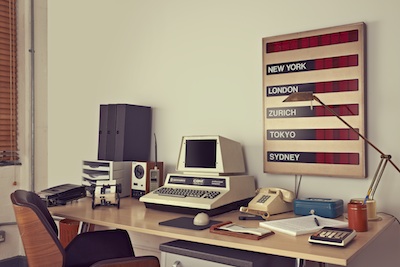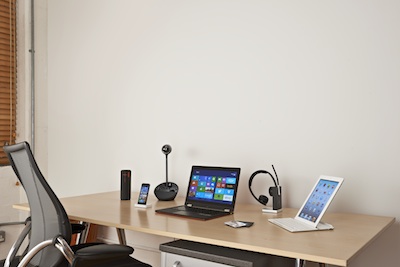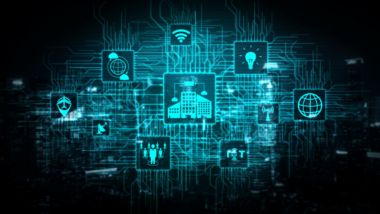As shown by our sliding graphic below, which highlights the differences between desks of the 1980s and today, office technology has become increasingly streamlined in recent years.
Today’s ultrabooks are certainly a far cry from the computers of the early 20th century. The Colossus, the first programmable computer built in 1943, was the size of a large room, while today we carry machines many millions of times more powerful around in our pockets. The first wave of desktop computers, such as the Commodore 2001 pictured below, featured a 4k RAM: around one millionth of the processing power of a basic modern laptop.
So, are the days of room-sized computers well and truly behind us? Not necessarily.
With the proliferation of machine-to-machine technology (otherwise known as the internet of things), previously inanimate objects such as home appliances, buildings and even furniture can be made into ‘smart’ items with the ability to ‘think’ for themselves. Smart power grids can regulate effective power usage across whole cities, while M2M-enabled refrigerators will soon be able to order new supplies of essentials such as milk or eggs, simply by detecting when they are running low.
But the M2M revolution will not stop at home. Soon it will also spread to the workplace. It doesn’t take a huge leap of faith to imagine a desk of the future that can detect when employees are in work and regulate resources and power supply accordingly. Similarly, whole rooms or buildings may be able to independently regulate their temperature based upon the individual preferences of those who are present. Adding an element of trust to this technology will ensure greater acceptance of the technology and enable interaction between different stakeholders to offer exciting new services.
While the days of whole rooms dedicated to one computer may seem a long time ago, in the near future our whole room will be simply a network of many interconnected items and surfaces. From walls to windows to chairs, if the M2M revolution continues at its current pace it will make our future offices a whole lot smarter, and far better places to work.


The desktop of the past and near future, imagined by Gemalto in 2013.


